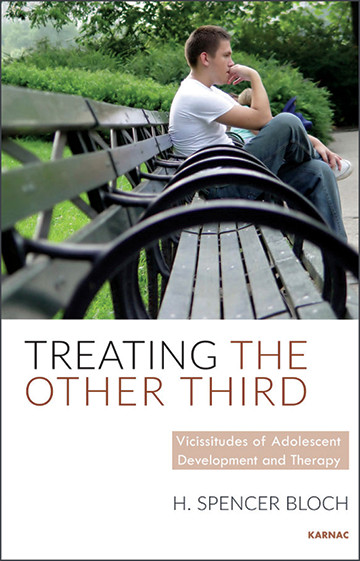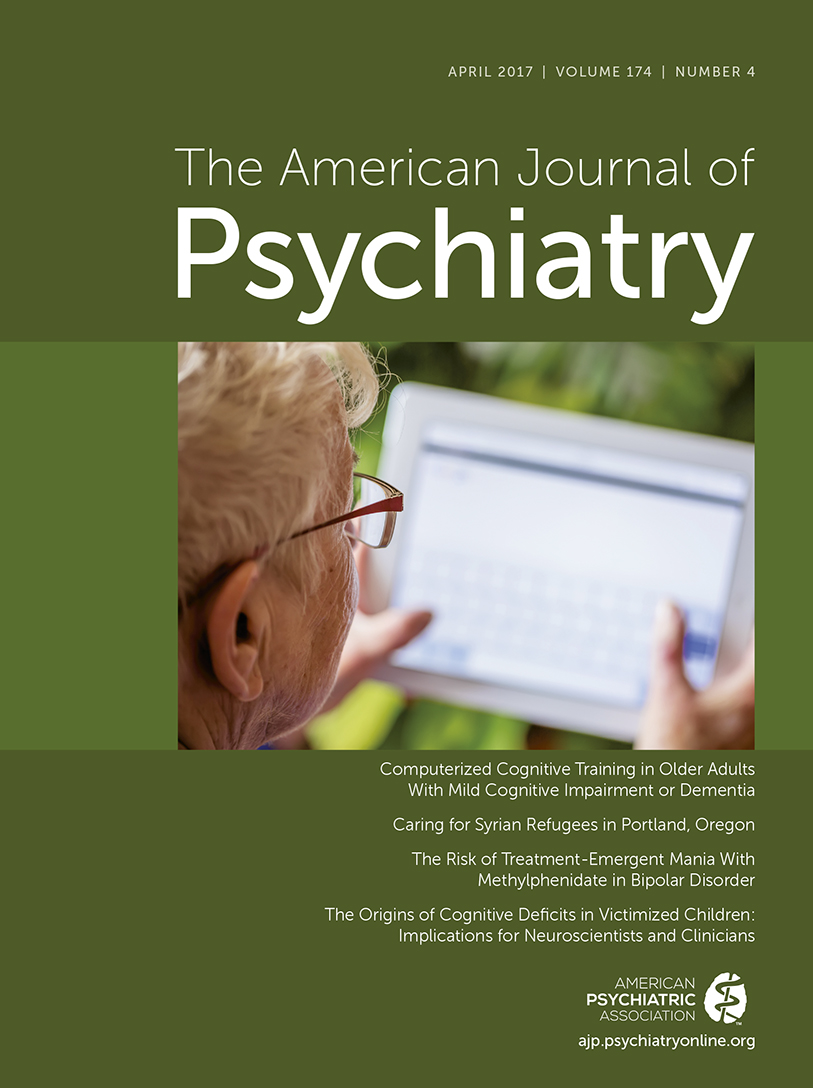Should psychiatrists regularly read, throughout their careers, some detailed individual case histories by other psychiatrists and colleagues, to keep ourselves sane and balanced and aware of both complexity and the need for some scientific accuracy and generalization? I think we probably should, more than we do. It even seems to me at least arguable that some psychiatric journals might perhaps reinstate devoting some space—on actual paper or at least electronically—to publishing a few such cases regularly.
H. Spencer Bloch’s Treating the Other Third: Vicissitudes of Adolescent Development and Therapy is a mostly useful book that contains two thoughtful and fairly long clinical case presentations of adolescents with fairly serious psychiatric problems. Although I take issue with some of the author’s social-psychiatric ideas and generalizations in his later chapters, Dr. Bloch treats and discusses these two individuals with tact and sympathy, thoughtfulness and complexity, and skill, with attention to details and to appropriate biological, psychological, and socio-cultural factors. These factors all matter but are not always acknowledged or used in current psychiatry. Childhood, development, family, physical health, strengths, school, adolescence, social pressures and expectations, losses, feelings, unconscious and conscious psychodynamics and conflicts—these are all commonplaces of mid-20th-century psychiatry and of psychoanalysis, but they are often skimmed over or bypassed today in our medication-oriented field.
The book’s title refers to the idea that there are many psychiatrists who (with or without clear definitions and evidence) seem to endorse a rule of thumb saying that about two-thirds of patients, or of adolescent patients, with fairly severe mental illness can be significantly helped by medication. If you accept that, it leaves about a third who cannot or are not. That is a large number of people, and beyond that, I think Dr. Bloch is too modest in aiming us at the one-third without more solidly suggesting that even many of the two-thirds do far better with some good psychotherapy than without.
The book is not entirely clearly organized and edited as one entity. It is a collection of clinical ideas, including two good cases and some social-psychiatric meditations on, for example, homosexuality, divorce, and day care. Chapter 1, which is about 70 pages, is about a late adolescent male, Will, who is suicidal, and for whom the diagnoses of depression and bipolar disorder have some clear relevance. There is a history of a paternal stroke, a troubled brother, alcohol and marijuana use, impulsivity, anger, verbal abuse, and some manic or hypomanic states. Keeping Will in therapy and helping him with both resilience and normal adolescent growth are well described.
Chapter 2, which is about 45 pages, is about an adolescent girl, Sydney, with an eating disorder involving much induced vomiting. The patient had some symptoms of depression, attention deficit hyperactivity disorder, learning disability, and obsessive-compulsive disorder. Sydney’s father is a chef with eating problems; Sydney’s mother is critical of Sydney and has a history of troubles with her own mother; there are self-image problems and understandable reasons to stop purging and to relapse. Sydney makes, and Dr. Bloch fosters, efforts to take initiative in her own cure. With Sydney as with Will, Dr. Bloch is a sensitive and sensible ally who describes his patient well and surrounds his clinical discussion with pertinent references to research literature findings and gaps.
Chapter 3 is about homosexuality. Here I think Dr. Bloch is in major ways remarkably wrong and far more biased in terminology, assertions, and clinical leanings than he seems aware of. He seems downright nostalgic for mid-20th-century psychoanalytic views of homosexuality, and he can generalize too easily, blurring things socially disapproved of with pathology. He usefully refers to a widely cited study of homosexual people that found about 50% concordance for homosexuality in male and female homosexual identical twins. That is higher than the concordance rate for fraternal twins, which is higher than the concordance rate for siblings, but it is also far from 100%, giving considerable force to the many current students in the field who accept both genetic and other prenatal contributory factors and environmental contributory factors. Dr. Bloch is quite begrudging about accepting genetic or prenatal contributory factors.
Chapter 4 considers suicide and homicide, and chapter 5 discusses pathologizing and normalizing and makes some somewhat loose social-psychiatric points. Dr. Bloch does not much like or sympathize with divorce or day care, but his criticism seems to me somewhat selective and less than persuasive. On the whole, Dr. Bloch is good at respecting the psychodynamic approach, environmental influence, the relevance of individual development, and the doctor-patient relationship, and his two long case histories are of potential use to many clinicians.


